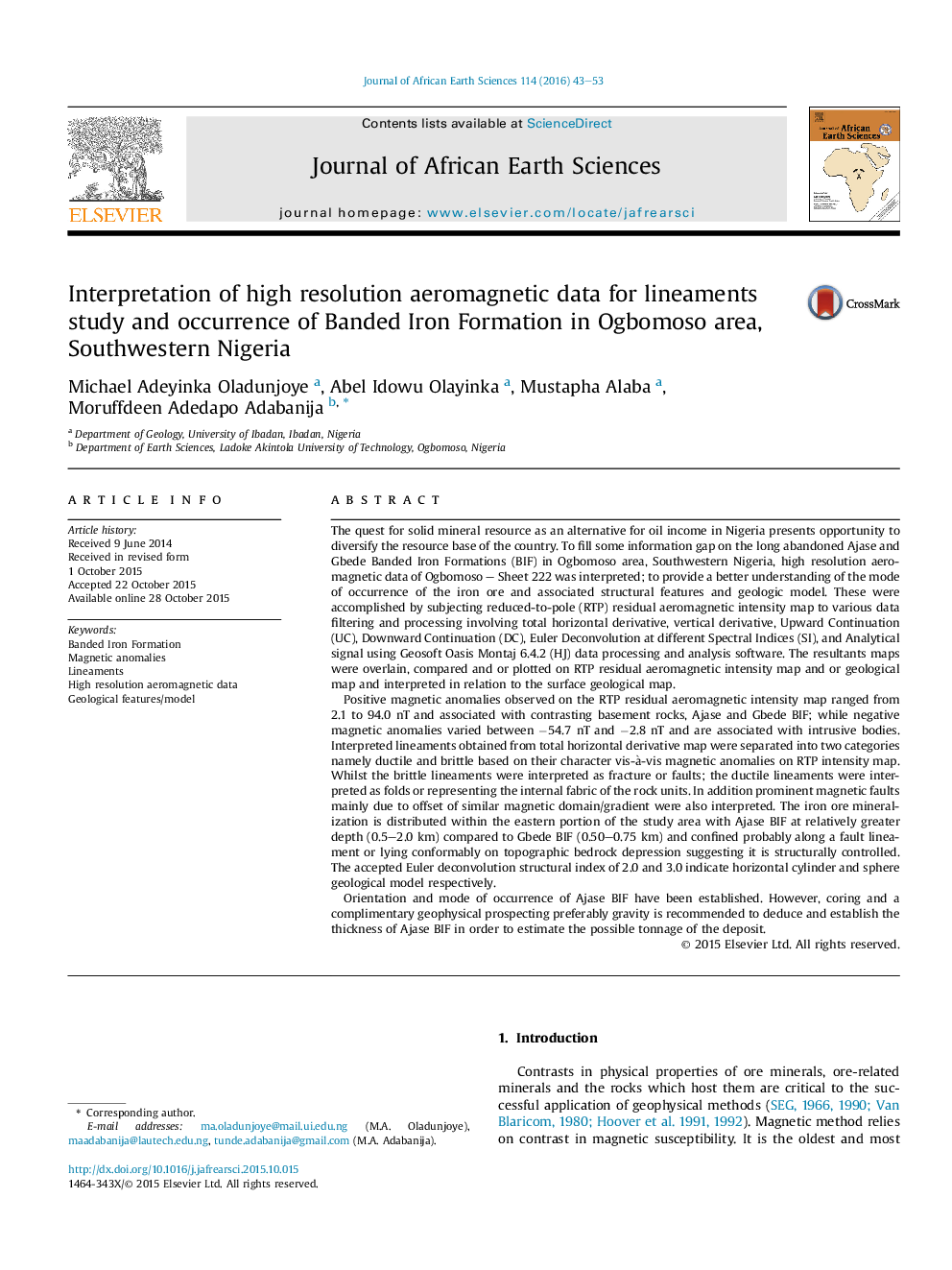| کد مقاله | کد نشریه | سال انتشار | مقاله انگلیسی | نسخه تمام متن |
|---|---|---|---|---|
| 4728457 | 1640194 | 2016 | 11 صفحه PDF | دانلود رایگان |

• Configuration of the sinistral and dextral faults suggests block rotation.
• Magnetic derivative maps were juxtaposed on geological map.
• Magnetic lineaments are diagnostic of structural trends.
• Ajase and Gbede BIF occurred at different depth and structurally controlled.
• The structural styles suggest 3 different orogeny of the study area.
The quest for solid mineral resource as an alternative for oil income in Nigeria presents opportunity to diversify the resource base of the country. To fill some information gap on the long abandoned Ajase and Gbede Banded Iron Formations (BIF) in Ogbomoso area, Southwestern Nigeria, high resolution aeromagnetic data of Ogbomoso – Sheet 222 was interpreted; to provide a better understanding of the mode of occurrence of the iron ore and associated structural features and geologic model. These were accomplished by subjecting reduced-to-pole (RTP) residual aeromagnetic intensity map to various data filtering and processing involving total horizontal derivative, vertical derivative, Upward Continuation (UC), Downward Continuation (DC), Euler Deconvolution at different Spectral Indices (SI), and Analytical signal using Geosoft Oasis Montaj 6.4.2 (HJ) data processing and analysis software. The resultants maps were overlain, compared and or plotted on RTP residual aeromagnetic intensity map and or geological map and interpreted in relation to the surface geological map.Positive magnetic anomalies observed on the RTP residual aeromagnetic intensity map ranged from 2.1 to 94.0 nT and associated with contrasting basement rocks, Ajase and Gbede BIF; while negative magnetic anomalies varied between −54.7 nT and −2.8 nT and are associated with intrusive bodies. Interpreted lineaments obtained from total horizontal derivative map were separated into two categories namely ductile and brittle based on their character vis-à-vis magnetic anomalies on RTP intensity map. Whilst the brittle lineaments were interpreted as fracture or faults; the ductile lineaments were interpreted as folds or representing the internal fabric of the rock units. In addition prominent magnetic faults mainly due to offset of similar magnetic domain/gradient were also interpreted. The iron ore mineralization is distributed within the eastern portion of the study area with Ajase BIF at relatively greater depth (0.5–2.0 km) compared to Gbede BIF (0.50–0.75 km) and confined probably along a fault lineament or lying conformably on topographic bedrock depression suggesting it is structurally controlled. The accepted Euler deconvolution structural index of 2.0 and 3.0 indicate horizontal cylinder and sphere geological model respectively.Orientation and mode of occurrence of Ajase BIF have been established. However, coring and a complimentary geophysical prospecting preferably gravity is recommended to deduce and establish the thickness of Ajase BIF in order to estimate the possible tonnage of the deposit.
Journal: Journal of African Earth Sciences - Volume 114, February 2016, Pages 43–53